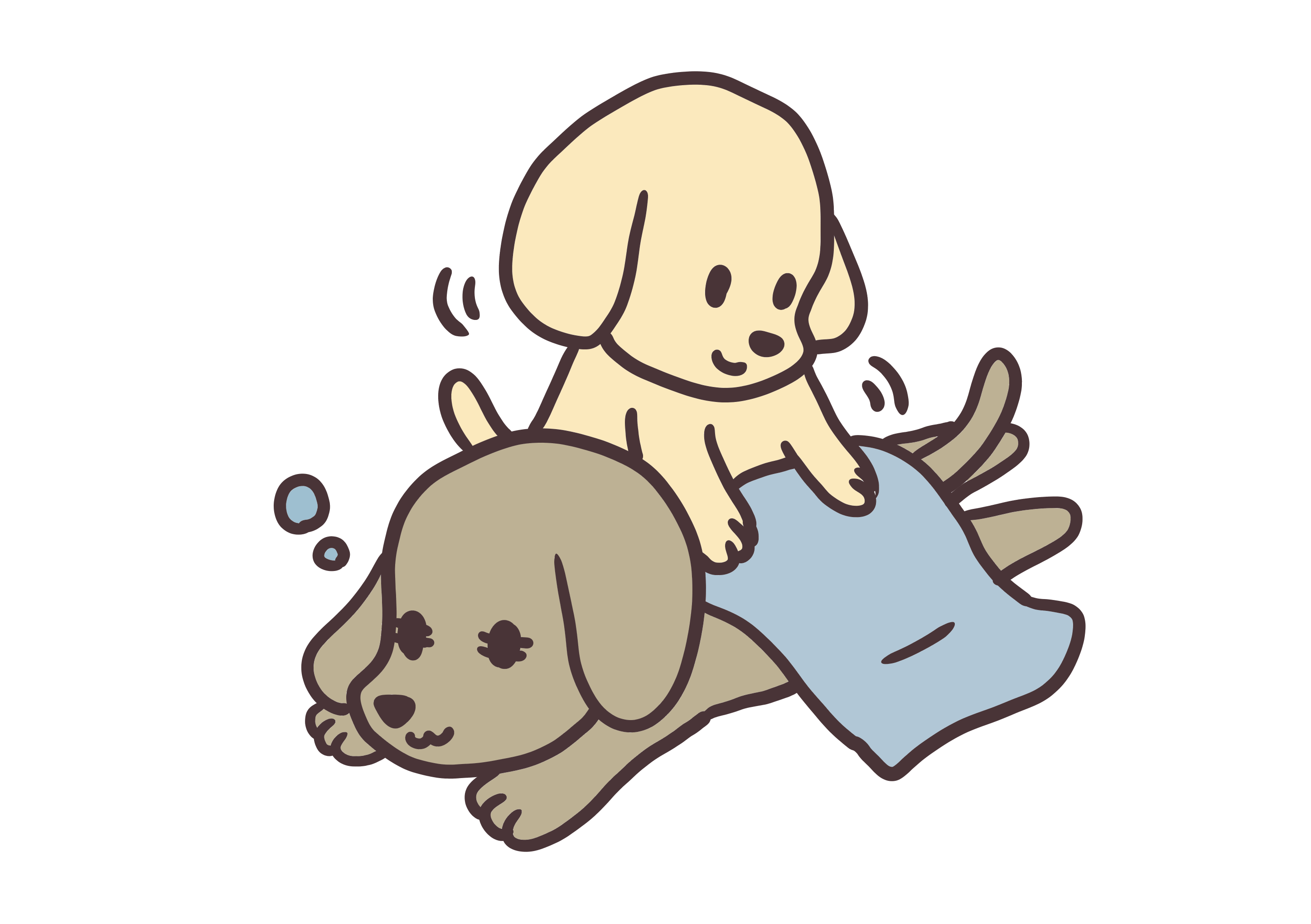Many of the pets we consult with suffer from tumors. From the perspective of traditional oriental medicine, tumors are often regarded as “Oketsu,” which refers to stasis caused by thickened blood. Although lipomas are benign tumors, their significant growth is considered to be due to “Suitai” or water stasis.
A common factor in both conditions is “stagnation.”
No matter how good the food or supplements are, if the body is stagnant, the results may not be satisfactory.
While incorporating beneficial substances, it is also essential to eliminate the bad ones through detoxification. However, for senior pets or those with illnesses, their ability to naturally detoxify is often weakened.
Thus, when consulting with clients, we emphasize the importance of massage.
By improving circulation in the body through human touch, it not only enhances the body’s response but also provides valuable communication time between the pet and the owner. The term “teate” (hand care) suggests that touch can alleviate pain, soothe the mind, and stimulate the production of oxytocin, known as the “happiness hormone” or “bonding hormone,” providing a healing experience for the pet.
There are various massage techniques, but on this page, we will introduce some simple methods.
-
- Stroke from head to tail along the back.
This serves as a signal to start the massage.
While taking deep breaths, gently stroke the back.
The spine has two meridians: “Du mai” and “Bladder meridian.”
Du mai is a meridian that activates the body’s energy, while the Bladder meridian regulates the functions of the urinary and reproductive systems.
By targeting these areas, it is expected to balance the body’s water metabolism and help eliminate excess fluids through urination.
-
- Massage the front limbs
Massage in a circular motion from the shoulders to the paws.
Many pets suffer from cold extremities with poor blood flow, so be sure to also massage the paw pads.
-
- Massage the hind limbs
Massage from the lower back to the paws in the same way as step ②.
Especially around the hind limbs, many meridians regulate the digestive system, liver, gallbladder, kidneys, and bladder. Therefore, pay extra attention when massaging the hind limbs.
-
- Massage the tail
Gently grasp the base of the tail and slide your hand toward the tip.
At the tail’s tip, there is a pressure point called “Bitan,” which is beneficial for relieving constipation.
Since regular bowel movements are considered a significant part of detoxification, ensure to stimulate this pressure point for constipated pets.
-
- Stimulate the “Yongquan” point
The base of the hind paw pads contains a point called “Yongquan.”
This point is said to be the source of the body’s vital energy and helps to regulate the overall circulation.
Gently press towards the toes.
For small dogs, using a cotton swab or the tip of a pen may make this easier.
- Pull the skin on the back
- Divide the back from the head to the base of the tail into five sections and lift the skin in each section. If one section does not stretch well, it indicates stagnation, so massage around that area in a circular motion.
The above are simple massages that anyone can do, but please note a few important points.
<Important Point ①: When you have time and are in a relaxed state>
Think about it from your perspective; if someone who is irritable or anxious massages you, it won’t feel good, right?
Make sure you are calm and composed before starting the massage.
If you perform a massage when you don’t have much time or when you feel anxious, it might cause discomfort to your pet.
Massage should ideally be done every day, but don’t force it.
Try to incorporate it as part of the time to bond with your pet when you have sufficient time and are in a calm state of mind.
If you touch an area where circulation is poor, it might cause pain or discomfort, and your pet may resist. There are also pets who simply do not like being touched in general.
No matter how beneficial it is for their health, forcing it will cause stress and disrupt their immune balance.
If your pet shows resistance, stop immediately and try again at another time or on another day, gradually getting them accustomed to it. Additionally, many people tend to apply too much pressure in an effort to help their pet.
The appropriate pressure is about enough to slightly indent a balloon.
If your pet resists, it might be a good idea to reconsider the amount of pressure you are using.
Incorporating at-home care can lead to changes in how your pet responds to treatment at the vet, and their overall health condition may improve even if you continue using the same food and supplements.
Please consider incorporating massage into your daily routine.


